New Forest was not exactly what I was expecting. With the title "national park" - I was thinking in US terms of wilderness land. It was in fact quite settled and well used, but still set aside for conservation and essentially no further development. The area was set aside in the 1000's by William the Conqueror as a hunting park for the crown (its 400 sq miles! One big hunting park). Eventually locals were allowed to use the land for a Commons for grazing their horse, cattle, and pig herds (no goats and only limited sheep allowed). These 'commoners' had land rights that have been passed down with their property in the area for centuries. Many family keep their land in the family, but their property and their grazing rights in the commons can be sold. There are small villages in the area, but its almost impossible to get a building permit to expand beyond existing residential properties.
We arrived in the local village of Brockenhurst by train and were met by our guide. She walked us a few blocks and then into a field. There were horses and cattle grazing openly. They are all branded and can be identified that way, but mostly spend their time on the commons. Legally an owner is not supposed to have more herds on the commons than they can support on their own property, but this is a classic "tragedy of the commons" collective action problem. Owners do put out more animals and they can overgraze the land. Management of the land is complex and I couldn't fully understand it, but there is a judical board that arbitrates disputes, there is a conservancy that doesn't really like the grazing (especially overgrazing) at all, and rangers that keep people from camping where they are not supposed to. And probably more entities that I don't understand at all.Its a little hard to tell, but this horse above has had his tail cut at three lengths. The national vets who do annual physicals on the animals use this to show the horse has been caught and inspected. The guide said some of the ponies are savvy to this and will hide deep in the forest to avoid the vets.Only cows (not bulls) are allowed to graze on the commons. Likewise, fillies are allowed free range, but stallions are only released once a year in the spring for several weeks. If you have a stallion that you want to release, you have to petition to do so. Only 20 are allowed each spring and they have to have good health and blood lines.
Those who have houses in the area cannot plant gardens were the herds can reach them. They either have robust fences/gates, or a cattle guard across their drive ways. Apparently some of the horses are very clever and can roll on their backs across the guard to get by them, and they even teach their colts this behavior!
We crossed the pastures and eventually walked into the forest. It was a hazy, but thankfully not rainy, day.
This area here at the edge of the forest is actually a bog. You can tell by the ground cover that is growing - bog myrtle - it loves damp ground. This area is in a depression on the ground that doesn't drain. You couldn't guess from looking at this angle, but we walked a little further on and you could see the oozy dark brown soil/mud on the edge of the road. The cattle can manage to get in and out of these bogs, but it takes more work and they come out covered in mud.

When you walk through the forest, you don't really have to duck your head much under low lying boughs. Everything edible has been effectively grazed at head height with the various herds grazing in the area.
There were some evergreen pines planted several centuries ago, but they started to change the ecosystem and they decided to stop planting and take them down. They had already started attracting different birds, however, so they decided to leave a few of them to not dislocate the birds.
The larger trees were used for shipbuilding a long time ago. There are not many sizeable old trees to harvest these days, and the native trees are not growing as well due to climate change, so they are starting to plant new trees from further north that are doing well so the forest remains.
There are still deer in the forest. They have some problems with overpopulation and occasionally have to cull them. They used to allow hunting with packs of dogs, but this is now considered cruel and they are hunted with rifles, but not pursued by dogs. There are some stock that have white coats and some that are brown. Those that do the culling tend to choose the brown ones to cull because the white ones are easier to stop and they want more of them in the future.
The larger trees were used for shipbuilding a long time ago. There are not many sizeable old trees to harvest these days, and the native trees are not growing as well due to climate change, so they are starting to plant new trees from further north that are doing well so the forest remains.
There are still deer in the forest. They have some problems with overpopulation and occasionally have to cull them. They used to allow hunting with packs of dogs, but this is now considered cruel and they are hunted with rifles, but not pursued by dogs. There are some stock that have white coats and some that are brown. Those that do the culling tend to choose the brown ones to cull because the white ones are easier to stop and they want more of them in the future.
There are some times in the year when pigs are released onto the commons to openly graze (but not all year - they eat everything!) They are particularly beneficial in the fall when the acorns and some other nuts have fallen to the forest floor. If ponies it too many of these, they will get sick. The pigs are essentially the forest vacuum cleaners.
There are voles, moles, rats, squirrels, and badgers, but no raccoons or possums. Obviously no bears (this is not Yellowstone). Our guide said the most dangerous wildlife you'll encounter in the UK is an adder (snake) and its bite won't kill you.
Above and below are two different kinds of heather. The one above with the little bell-like flowers is my favorite.
This prickly, spiny bush below is a gorse bush. The horses love it. In the fall, they actually grow 'mustaches' on their upper lips to protect them from the prickles when they graze on these bushes.
Below is a close up of the bog myrtle that grow all across the boggy areas. It has some bug repelling properties and smells really good (kind of citronella-like) when you rub the leaves between your fingers. They apparently don't have a lot of mosquito problems here. We didn't see/feel any.
The pink flowers are on some kind of mint. The stems are bare of leaves because some animal has grazed them off (but delicately enough to leave the flowers behind). We couldn't find any that actually had their leaves on them.

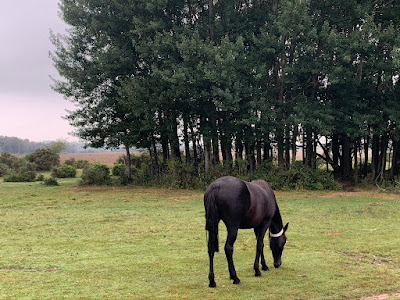


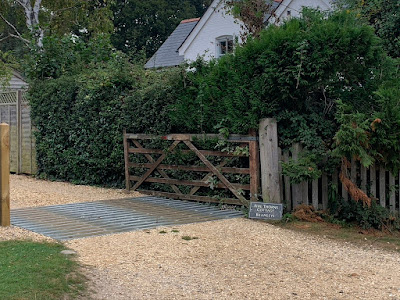

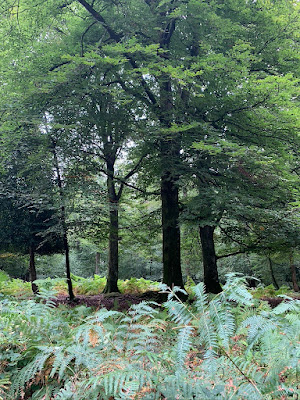





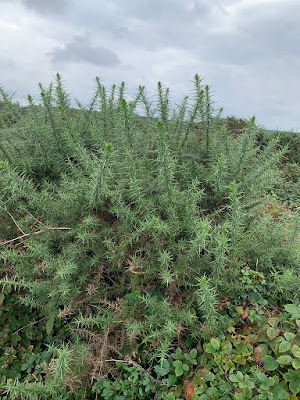



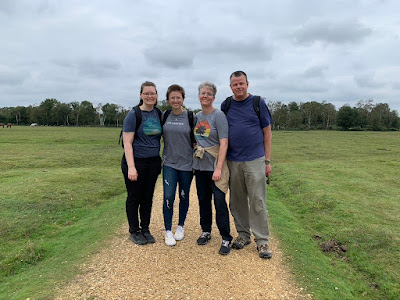
No comments:
Post a Comment